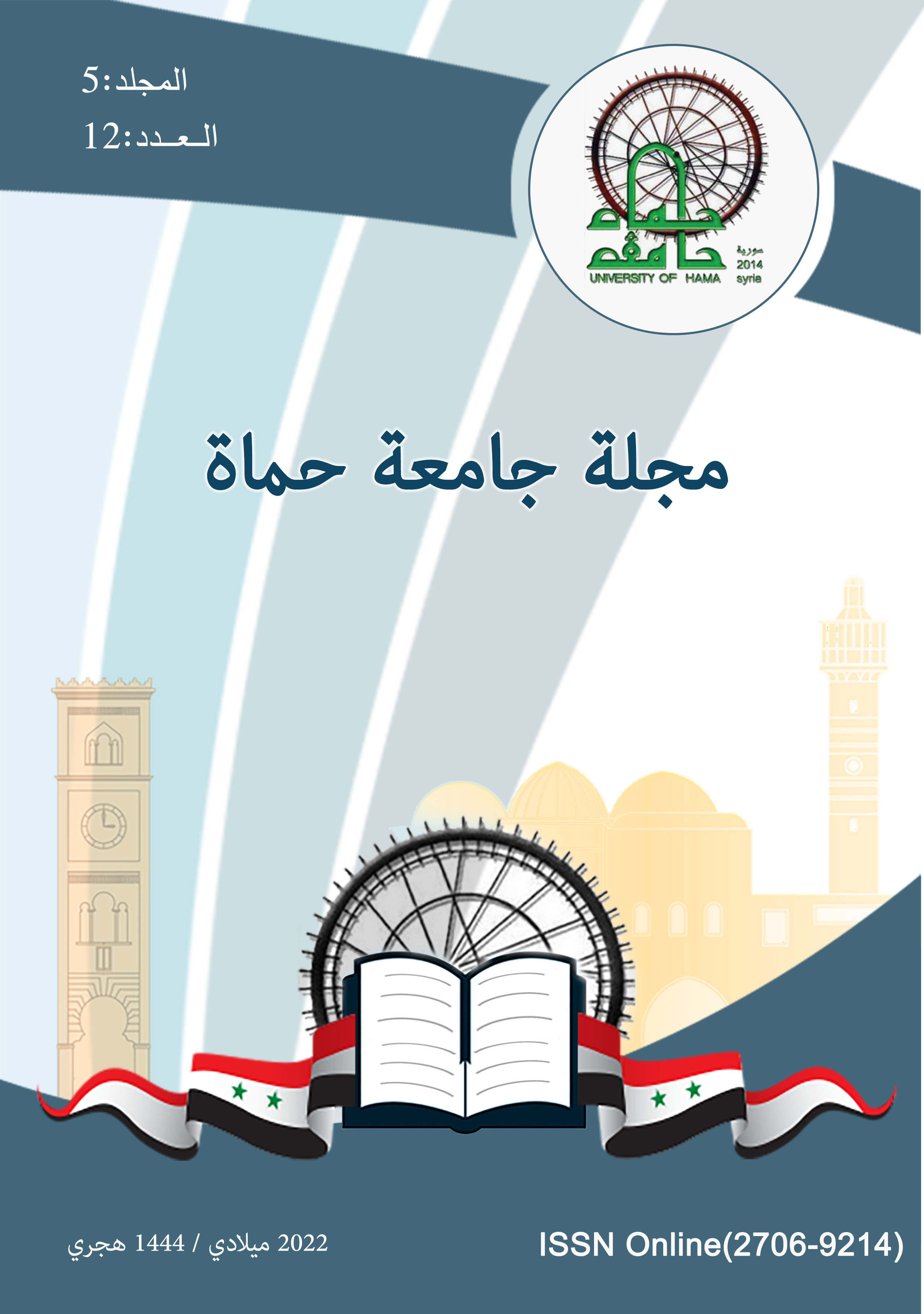دراسة موثوقية الحفيرات الحنكية في تعيين خط الاهتزاز في أصناف الحنك الرخو المختلفة
علاقة السد الخلفي كدليل
الملخص
مقدمة: تعتبر الحفيرات الحنكية من المعالم التشريحية الموجودة في قبة الحنك القريبة من خط الاهتزاز. العلاقة بين موقع الحفيرات الحنكية وخط الاهتزاز لها اختلافات وترتبط بأنواع الحنك الرخو المختلفة. أجريت هذه الدراسة في كلية طب الأسنان في جامعة الأندلس الخاصة للعلوم الطبية في طرطوس, كانت مدة الدراسة 6 أشهر.
الهدف: الهدف من هذه الدراسة هو تعيين موقع خط الاهتزاز سريرياً بالنسبة للحفيرتين الحنكيتين في سوريا ومقارنة مكان توضع خط الاهتزاز مع أصناف الحنك الرخو المختلفة.
مواد وطرائق العمل: تم فحص 120 مريض درد كامل, 32 أنثى (%26,7), 88 ذكر73,3) ) وكان متوسط الأعمار 65,7. تم توجيه المرضى لنطق صوت "آه" بطريقة غير مبالغ فيها لتعيين خط الاهتزاز باستخدام قلم كوبيا وتم تحديد الحفيرتين الحنكيتين ثم قياس المسافة بينهما بواسطة فرجار معدني كما تم تحديد صنف قبة الحنك الرخو وفق millsap ثم سجلت النتائج في جدول البيانات.
النتائج: تظهر نتائج دراستنا أنه عند 10 مرضى (9,66٪) كان خط الاهتزاز أمام الحفيرات الحنكية، ولدى 16 مريض (13.07٪) مباشرة عليها ولدى 94 مريض (77,26٪) إلى الخلف منها. كان أغلب المرضى الذين تواجد لديهم خط الاهتزاز خلف الحفيرات الحنكية لديهم صنف ثاني من أصناف قبة الحنك الرخو (62 مريض). أظهر التحليل الإحصائي وجود فروق ذات دلالة إحصائية عند مستوى P=0.01)) لمكان توضع خط الاهتزاز بالنسبة للحفيرات الحنكية, بينما لم يلاحظ وجود فروق لصنف الحنك الرخو في مكان توضع خط الاهتزاز ولا بين جنس المريض والمسافة بين خط الاهتزاز والحفيرات الحنكية.
الاستنتاجات: خط الاهتزاز كانت متوضع غالباً خلف الحفيرات الحنكية, وكان متوسط المسافة بينهما 2,55 ملم.
الكلمات المفتاحية: الحفيرتان الحنكيتان, الجهاز الكامل العلوي, خط الاهتزاز.
المراجع
Iwanaga, J., Kido, J., Lipski, M., Tomaszewska, I.M., Tomaszewski, K.A., Walocha, J.A., Oskouian, R.J., and Tubbs, R.S., (2017). Anatomical study of the palatine aponeurosis: application to posterior palatal seal of the complete maxillary denture. Surg Radiol Anat, Aug 19.
Fernandes, V.A., Chitre, V., and Aras, M., (2008). A study to determine whether the anterior and posterior vibrating lines can be distinguished as two separate lines of flexion by unbiased observers. Ind J. Dent Res, 19:335-39.
Bindhoo, Y.A., thirumurthy, V.R., Jacob, S.J., Ajjanakurien, and Limson, K.S,. (2011). Posterior palatal seal literature review. Inter J. Prosthet Rest Dent, 1:108-14.
Kim, Y., Michalakis, K.X., Hirayama, H., (2008). Effect of relining method on dimensional accuracy of posterior palatal seal. An in vitro study. J. Prosthodont. 17:211-8.
Sato, Y., Hosokawa, R., Tsuga, K., and Yoshida, M., (2000). Immediate maxillary denture base extension for posterior palatal seal. J. Prosth Dent, 83:371-73.
Krysinski, Z.J., and Prylinski, M., (2007). Carving of amaster caste to obtain a posterior palatal seal of a complete maxillary denture as performed by four prosthodontics. J. Oral Sc, 49:129-32.
Glossary of prosthodontic terms. (2005). J. Prosth Dent, 94:10-92.
Winkler, S., Essentials of Complete Denture Prosthodontics. (2004). 2nd ed. Ish. Euro: AITBS.
Millsap, C.H., The posterior palatal seal area for complete dentures. (1964). Dent Clin North Am. 8:663-673.
Alfadda, S.A., AlAmri, M.D., AlOhali, A., AlHakami, A., and AlMadhi, N., (2017). Two-Implant-Supported Mandibular Overdentures: Do Clinical Denture Quality and Inter- Implant Distance Affect Patient Satisfaction? Int J. Prosthodont, 30(6):519–25.
Nikoukari, H., (1975). A study of posterior palatal seals with varying palatal forms. J. Prosthet Dent, 34:605‑13.
Zarb, G.A., and Bolender, C.L., (2013). Prosthodontic treatment for edentulous patients. 13th ed.St. Louis: Mosby.
Lye, T.L,. (1975). The significance of the fovea palantini in complete denture prosthodontics. J. Prosthet Dent, 33:504.10.
Fenn, H.R.B., Liddelow, K.P., Gimson’s. A.P,. (2012). Clinical Dental Prosthetics 6th edit. London: Unicorn Press.
Alousi, Y,. (2009). Reliability of fovea palatinea in determining the posterior palatal seal. J. Bagh Dent, 21:41-45.
Bhushan, P., Aras, M.A., Chitre, V., Mysore, A.R., Mascarenhas, K., and Kumar, S., (2017). The Hollow Maxillary Complete Denture: A Simple, Precise, Single-Flask Technique Using a Caramel Spacer. J. Prosthodont Apr 6.
MacEntee, M.I., Nolan, A., and Thomason, J.M., (2004). Oral mucosal and osseous disorders in frail elders. Gerodontology. 21:78-84.
Rashid, H., Vohra, F.A., and Shahzad, A., (2013). Altered cast technique: Improving tissue support for the distal extension bases. J. Pak Dent Assoc, 22:234-236.
Rashid, H., Hanif, A., Vohra, F.A., and Sheikh, Z., (2015). Implant over dentures: A concise review of the factors influencing the choice of the attachment systems. J. Pak Dent Assoc,24:63-69.
Nelson, M., (1970). Analysis of the relationship between head posture and soft tissue contour during impression procedures [thesis]. New York: NYU College of Dentistry New York.
Winkler, S., (2000). Essentials of Complete Denture Prosthodontics. 2nd ed. Delhi: AITBS Publishers, p. 111.
Silverman, SI., (1971). Dimensions and displacement patterns of the posterior palatal seal. J. Prosthet Dent, 25:470‑88.
Zarb, G.A., and Bolender, C.L., (2004). Prosthodontic Treatment for Edentulous Patients. 12th ed. St. Louis: Mosby.
Heartwell, C.M., and Rahn, A.O., (2002). Syllabus of Complete Dentures 5th ed. Hamilt.Lond: BCDInc.
Bylicky, H.S., (1966). Variable approaches in obtaining a posterior palatal seal: Description of technique. N Y J. Dent, 36:280-82.
Lavelle, W.L., and Zach, G.A., (1973). The posterior limit of extension for a complete ma


